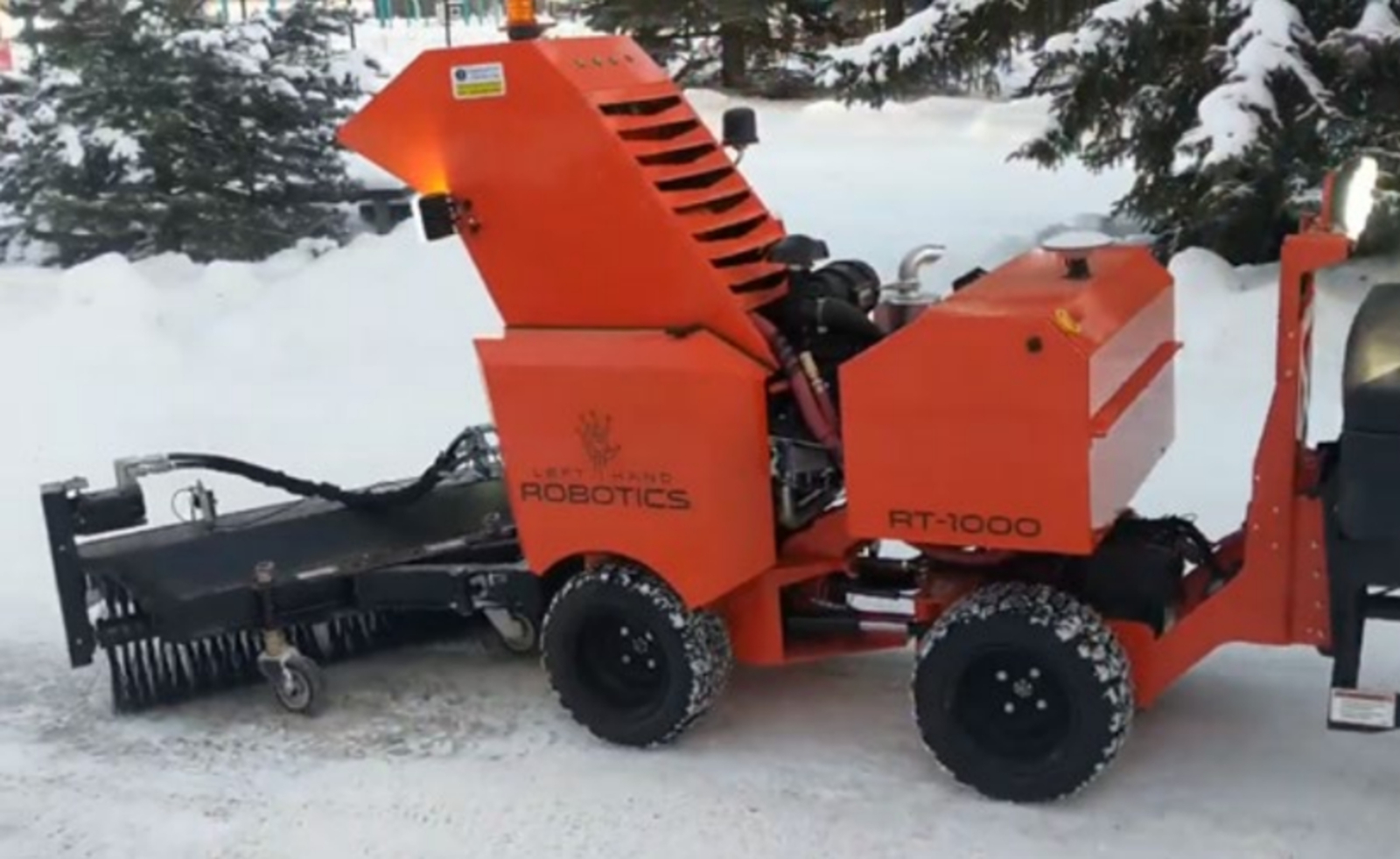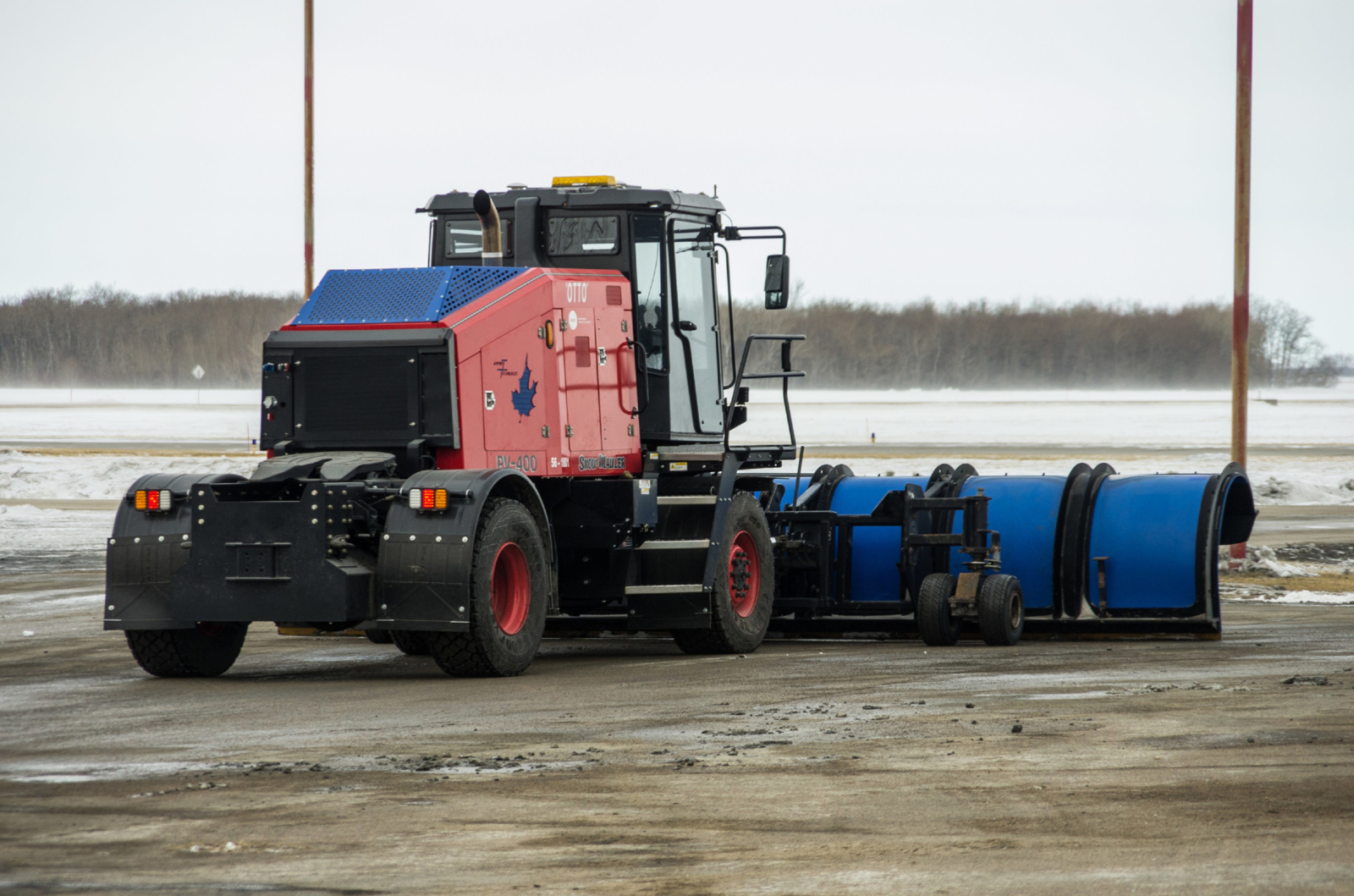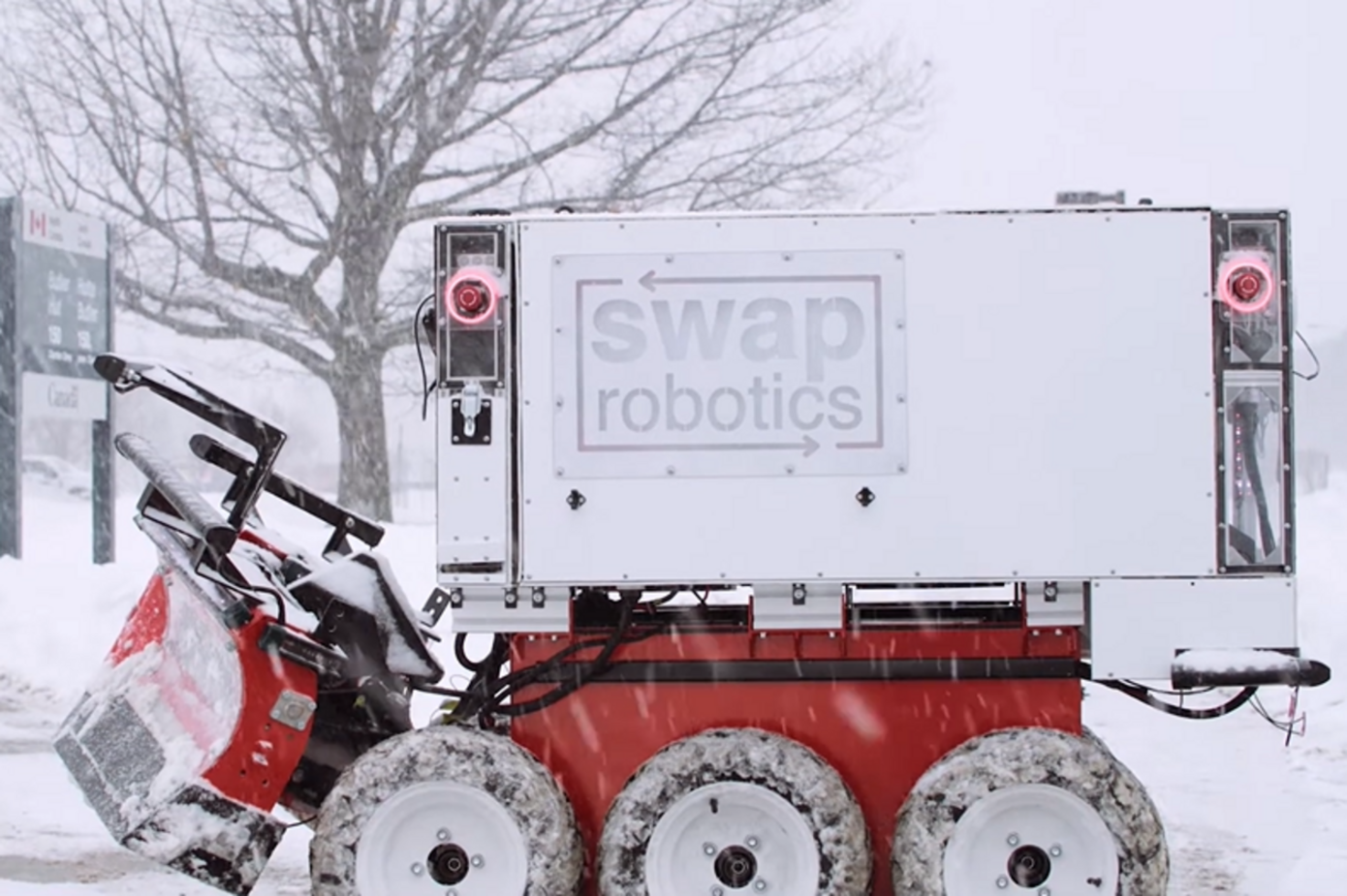Unmanned snowplows beeping along sidewalks may seem ahead of our times, but some communities are already welcoming these zero-emission robots onto their streets.
Diesel-fuelled plows remain the choice for clearing wintry roads, but autonomous electric plows have proven they can safely and systematically clear pathways while decreasing planet-heating carbon dioxide emissions.
Along with federal testing in Ottawa, robot plows have run trials for towns in Ontario, cities in Alberta and even an airport in Manitoba, eliciting mixed reviews around their ability to meet heavier demands.
So far, the cost of these machines and limits to their size and effectiveness mean it’s unclear whether they’ll see wider distribution on Canadian streets.
Little research has examined the CO2 emissions of snowplows, but communities, such as Abbotsford, B.C., have found these vehicles leave a large climate footprint in colder winters.
In 2017, Abbotsford drove up its fleet emissions from the previous year by about 22 per cent, largely due to additional use of snow-clearing equipment for snowstorms, according to its annual report.
In the European Union, heavy-duty vehicles, such as snowplows, generate about 25 per cent of CO2 emissions from road transportation, Slovenian researchers found in 2018. This accounts for roughly five per cent of the EU’s CO2 emissions.
Federal interest in robot plows
Municipalities across Canada began a push five years ago to experiment with zero-emission robot plows. Since then, the federal government has tried what it calls the world’s first semi-autonomous electric snowplow.
For $172,000, Transport Canada (TC) acquired plows from Swap Robotics in Kitchener, Ont., to perform real-world testing just outside Ottawa’s downtown core in the 2021-22 winter. The plows make less noise than gas-powered ones, run 15 to 20 hours on one charge and yield to people, animals or other vehicles that come within 10 feet.
The plows are only suitable for sidewalks but were also tested at Carleton University and in Brampton, Ont. A subsequent version of the plow was tested during the spring and summer of 2023 in rural Ottawa and Chesterville, Ont.

TC received no complaints during the trials, but it’s up to provinces and municipalities to decide whether to use them.
“The major limitation of deploying these devices on roads is the unpredictability of vehicles with human drivers and unexpected road conditions,” TC said in an email.
The federal government continues to commit to net-zero emissions by 2050.
Innisfil, Ont., also experimented with a Swap Robotics plow for the 2021-22 winter, offering $100 to the resident who proposed the best name.
But since the pilot project ended post-season, staff say they haven’t pursued the option further.
Swap Robotics says its latest plow can push 2,000 pounds of snow, hold 600 pounds of salt, and operate in -40 C. Companies can rent these plows for $2,500 to $4,000 per month, which gives them 400 hours of use and guarantees replacement in 90 minutes if a plow stops working.
Skepticism in Alberta
Some Alberta communities had robot snowplows in action as early as December 2019, although these early models ran on gas, not electricity.
Unlike some provinces, Alberta runs a single permit office where any municipality can request authorization to use robots for snow clearing, TC said.
Grande Prairie, Alta., became the first Canadian testing ground for Left Hand Robotics’ RT-1000 snowplow after its numerous applications in the U.S.
The gas-powered machine, which came with GPS, radar and 360-degree cameras, also doubled as a lawn mower. It could plow no more than eight centimetres of snow but tackled the seven-kilometre Bear Creek trail and was expected to clear and salt the 13-kilometre Muskoseepi Park trail network the following winter.

The plow didn’t stay long once Minnesota-based Toro Company bought out Left Hand Robotics in March 2021 and reclaimed all its plows, according to Rory Tarant, Grande Prairie’s intergovernmental affairs director.
Tarant, who oversaw the RT-1000 project, said the plow met a lot of skepticism around safety, while also garnering curiosity and double-takes from passersby.
“They were looking around to see who’s got the remote,” Tarant joked.
He described the device “at the bleeding edge” of technology. Staff could narrow the plow’s field of vision so it paused less because of nearby movement, for example. But Tarant said these devices can only be programmed for so many variables and struggle with icy hills and windrows.
“It was not very effective for winter operations,” he said.
For the unit cost of about $100,000, Tarant added that “the savings didn’t materialize on the snow-clearing front,” either financially or for staff.
The RT-1000’s trial in Grande Prairie also inspired Calgary to buy two Left Hand Robotics plows in 2020. Edmonton bought one in 2019 but never put it into service, then returned it to the manufacturer “upon their request,” spokesperson Kellen Taniguchi said by email.
Snowy airport trials
Robot snowplows have even seen Canadian trials in niche environments, such as airports.
Winnipeg Richardson International Airport credited itself in March 2019 with hosting North America’s first autonomous airport snowplow, named Otto.
Winnipeg-based Northstar Robotics programmed the autonomous system, while Airport Technologies Inc. in Southport, Man., manufactured the vehicle. Otto was only tested in a quiet part of the airport and the partnership with Northstar ended in 2020 as a cost-cutting COVID-19 pandemic measure, according to Michel Rosset, a Winnipeg Airports Authority spokesperson.

“The basis of the snowplow was, if successful, it could be used in low-traffic areas,” Rosset explained.
Northstar has since closed operations, and Airport Technologies president Brendon Smith expressed doubt that large gas-powered plows can be replaced to the same effect.
“Electrification is probably not realistic for the size of these things,” Smith said.
Robot snowplows may have yet to gain long-term traction. But back in Ottawa, Four DRobotics is developing an autonomous zero-emission snowplow and will begin testing sooner or later, co-founder and chief technology officer Jeremy James said by email.
James couldn’t reveal more details. But he said the company partnered with Ontario’s government to develop a municipal snowplow with a blade that can function autonomously to avoid road-level objects and potentially be safer than on a human-run plow.
“My advice is to stay tuned.”
The ability for it to run up
The ability for it to run up to 20 hours on a charge is impressive!
Hang on a minute. OK, so
Hang on a minute. OK, so these robot snowplows happen to be electric, and most of the existing fleet of human-driven snowplows happen to be diesel. But the way the article talks it's as if it's impossible to have electric snowplows that were driven by a human, so if you want to be sustainable that implies robots. Let's not forget that this is not the case, and the merits of battery-powered snowplows (which I strongly support) are a separate issue from the merits of robotically-controlled snowplows (of which I am suspicious).
Seems like a great idea and a
Seems like a great idea and a step in the right direction. The operating times are quite impressive. In the case of Alberta, I suspect it won't take Danielle Smith long to outlaw them to appease her corrupt oil & gas buddies.
Hope to see these in my own community in the future.






Comments